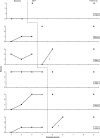Peer tutoring to prevent firearm play acquisition, generalization, and long-term maintenance of safety skills
- PMID: 18468285
- PMCID: PMC2410201
- DOI: 10.1901/jaba.2008.41-117
Peer tutoring to prevent firearm play acquisition, generalization, and long-term maintenance of safety skills
Abstract
Hundreds of accidental injuries and deaths to children occur annually in the United States as a result of firearm play. Behavioral skills training (BST) and in situ training have been found to be effective in teaching children the skills to use if they find a firearm, but training requires substantial time and effort. The current study examined the use of peers as tutors as a potential way to decrease the time and resources needed to teach these safety skills to youngsters. Peer trainers conducted BST and in situ training with other children. Children taught by the peer trainers acquired the safety skills and demonstrated them in naturalistic situations in which the skills were needed. Furthermore, all of the peer trainers acquired and maintained the skills. These results support the use of peer tutoring for teaching safety skills to other children.
Figures


Similar articles
-
Teaching safety skills to children to prevent gun play.J Appl Behav Anal. 2004 Spring;37(1):1-9. doi: 10.1901/jaba.2004.37-1. J Appl Behav Anal. 2004. PMID: 15154211 Free PMC article.
-
Evaluation of behavioral skills training to prevent gun play in children.J Appl Behav Anal. 2004 Winter;37(4):513-6. doi: 10.1901/jaba.2004.37-513. J Appl Behav Anal. 2004. PMID: 15669410 Free PMC article.
-
Comparison of two programs to teach firearm injury prevention skills to 6- and 7-year-old children.Pediatrics. 2004 Sep;114(3):e294-9. doi: 10.1542/peds.2003-0635-L. Pediatrics. 2004. PMID: 15342889 Clinical Trial.
-
Peer-mediated approaches to promoting children's social interaction: a review.Am J Orthopsychiatry. 1984 Oct;54(4):544-557. doi: 10.1111/j.1939-0025.1984.tb01525.x. Am J Orthopsychiatry. 1984. PMID: 6391193 Review.
-
Behavioral approaches to promoting play.Autism. 2003 Dec;7(4):401-13. doi: 10.1177/1362361303007004006. Autism. 2003. PMID: 14678679 Review.
Cited by
-
Teaching safety skills to children: prevention of firearm injury as an exemplar of best practice in assessment, training, and generalization of safety skills.Behav Anal Pract. 2008 Spring;1(1):30-6. doi: 10.1007/BF03391718. Behav Anal Pract. 2008. PMID: 22477677 Free PMC article.
-
They have a Voice; are we Listening?Behav Anal Pract. 2022 Apr 6;16(1):127-144. doi: 10.1007/s40617-022-00690-z. eCollection 2023 Mar. Behav Anal Pract. 2022. PMID: 37006422 Free PMC article. Review.
-
Effects of Behavioral Skills Training on Teacher Implementation of a Reading Racetrack Intervention.Educ Treat Children. 2019 Aug;42(3):385-408. doi: 10.1353/etc.2019.0018. Educ Treat Children. 2019. PMID: 32606490 Free PMC article.
-
A Survey of Safety Skills Training Used by Behavior Analysts in Practice.Behav Anal Pract. 2023 Jul 13;17(1):270-282. doi: 10.1007/s40617-023-00835-8. eCollection 2024 Mar. Behav Anal Pract. 2023. PMID: 38405279 Free PMC article.
-
Improving elementary students' knowledge and behavior to prevent traumatic injury: the impact of a behavioral skills training model delivered by aspirational role models.Eur J Pediatr. 2023 Jul;182(7):3275-3280. doi: 10.1007/s00431-023-05002-3. Epub 2023 May 8. Eur J Pediatr. 2023. PMID: 37154923
References
-
- Anhalt K, McNeil C.B, Bahl A.B. The ADHD classroom kit: A whole-classroom approach for managing disruptive behavior. Psychology in the Schools. 1998;35:67–79.
-
- Eber G.B, Annest J.L, Mercy J.A, Ryan G.W. Nonfatal and fatal firearm-related injuries among children aged 14 years and younger: United States, 1993–2000. Pediatrics. 2004;113:1686–1692. - PubMed
-
- Fueyo V, Bushell D., Jr Using number line procedures and peer tutoring to improve the mathematics computation of low-performing first graders. Journal of Applied Behavior Analysis. 1998;31:417–430.
-
- Gatheridge B.J, Miltenberger R.G, Huneke D.G, Satterlund M.J, Mattern A.R, Johnson B.M, et al. A comparison of two programs to teach firearm injury prevention skills to 6- and 7-year-old children. Pediatrics. 2004;114:e294–e299. - PubMed
MeSH terms
LinkOut - more resources
Full Text Sources
Medical

